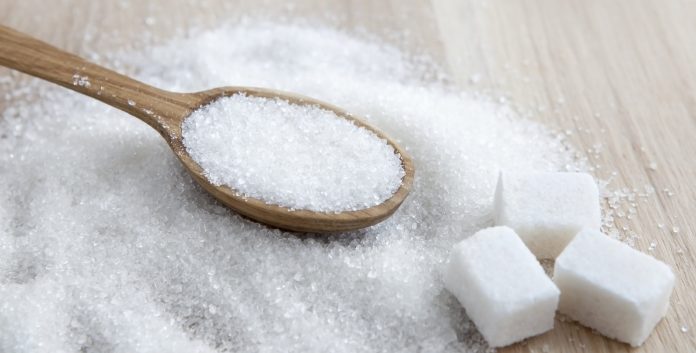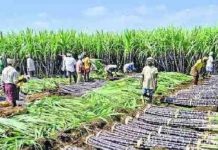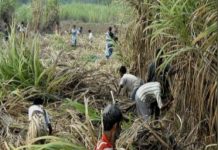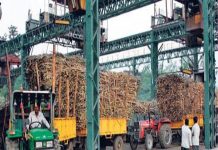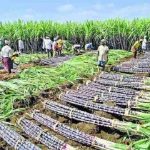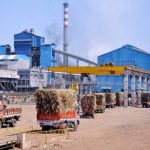Image Credits: Simple Doing
Mumbai : Sugar is the sweet poison for the Bharatiya Janta Party (BJP) government at the Centre and three sugar-producing states, namely Uttar Pradesh, Maharashtra and Karnataka, which will soon go to polls.
The local sugar prices have dipped drastically by 17 percent since last year, the sugar mill owners have excess stock in possession and are unable to pay dues to farmers and others, the banks have denied owners the permission to move their sugar stocks, since they have taken loans and the government had asked sugar mill owners to pay Fair and Remunerative Price (FRP), which they have been unable to do and the government has threatened to seize their stocks.
It is a serious crisis since the sugar mills right now owe Rs 20,000 crore as pending dues to farmers and the government is threatening to seize their stock. There is excess stock and the prediction for the current financial year is that the sugarcane crop production will be more than the current one. The crisis has reached a stage where all the stakeholders – farmers, sugar mill owners, state and national organisations for sugar production – were called for a meeting at Sakhar Bhavan in Mumbai on Friday. It was addressed by National Congress Party (NCP) chief Sharad Pawar, who asked them to form a committee and write a note to the Prime Minister Narendra Modi. By Saturday, the Prime Minister’s Office (PMO) had called upon the officials and communicated that Modi was inclined to meet to resolve the crisis. Speaking to Free Press Journal, an official working on
the paper said, “Today we have been informed, PM will meet us next week.”
The figures are astounding, currently the sugar available is 355 Lakh tonnes (LT), consumption is 250 LT and estimated net exports are 10 LT, while the excess stock is 95 LT. This is going to shoot up higher in the next crushing season, because the next crop is expected to far better than this year’s. As a result, in 2018-2018 the projections for sugar market are – 415 LT will be available, the consumption will go up to 255 LT, the exports are also expected to rise to 40 LT and the excess stock will shoot up to 120 LT. The three main states for sugarcane production are Uttar Pradesh, Maharashtra and Karnataka. The obvious reasons the central government is not intervening is due to the elections in Karnataka.
The crushing season figures for 2017-2018, shows that the total sugar production in the country has risen by 57.35 per cent. The production figures in three major states, Uttar Pradesh 113.50 LT, Maharashtra 107 LT and Karnataka 36.50 LT. The problem which began since last year escalated by late January.
The situation globally suggests a gap between the production and consumption. The production for 2017-2018 was 1790 LT and consumption was 1735 LT. For 2018-2019 the estimated production is 1735 LT and consumption is slated at 1750 LT. Currently, India is second largest sugar producing nation after Brazil. Brazil produces 320 LT and India 315 LT of sugar. Of this 75 percent sugar is raw sugar and out of 460 LT white sugar, 75 percent is refined and only 115 LT is the world market for plantation sugar.
This in turn has negative impact. The health concerns are growing and different countries are introducing new measures, which are soon going to impact the sugar producing mills and the exports. The figures show the annual consumption of sugar is 1740 LT, which is growing by one per cent. The anti-sugar campaign for health reasons has impacted sugar consumption. 25 countries have imposed sugar tax on various products containing sugar. India is the largest sugar consumer, with 250 LT and has two percent annual growth. Now however, the European countries have decided to introduce new policy of tax on sugar. The Food Safety and Standards Authority of India (FSSAI) is also planning to draft a policy forcing sugar mills to stamp in red ink, “Harmful for consumption”. At the meeting held at Sakhar Bhavan on Friday, there was an outcry by the farmers, sugarcane mills chairmen, members of Indian Sugar Mills Association (ISMA), Sakhar Sangh and members from other organisations. They have decided to come together to oppose this move.
The crisis is not just to do with processed sugar, even ethanol production has taken a major hit.
This was also the first time that chairmen of sugar mills from Karnataka participated in the meeting. They pushed for ethanol production, on the lines of Brazil, which has been diverting more sugarcane for ethanol production. This year, 50-60 LT Brazilian raw sugar will not be entering the world market.
“Ethanol is the sunrise industry and we all are in favour of it. The only problem is the pricing since two negatives are working against us right now. If like in 2015, the government once again improves the pricing and reduces the excise duty, we will all be in a good position to shift to ethanol production,” said Prakash Naiknavare, Managing Director, National Federation of Cooperative Sugar Factories, (NFCSF).
Few members said there are certain interventions expected from the government which range from providing incentives for sugar exports, reducing GST on ethanol by three percent, increasing basic price per litre, imposing five percent sugar cess over and above GST, promote production of fuel ethanol, create a buffet stock of minimum 50 LT and reimburse on interest, storage and insurance.
The suggestions were given to Pawar who asked the committee of 17 members to finalise on the paper taking the feedback given at the meeting. The committee will meet on Monday in Mumbai.
Pawar said effective steps need to be taken immediately to improve the condition of the sugar industry that was reeling under low prices due to a rise in production.

